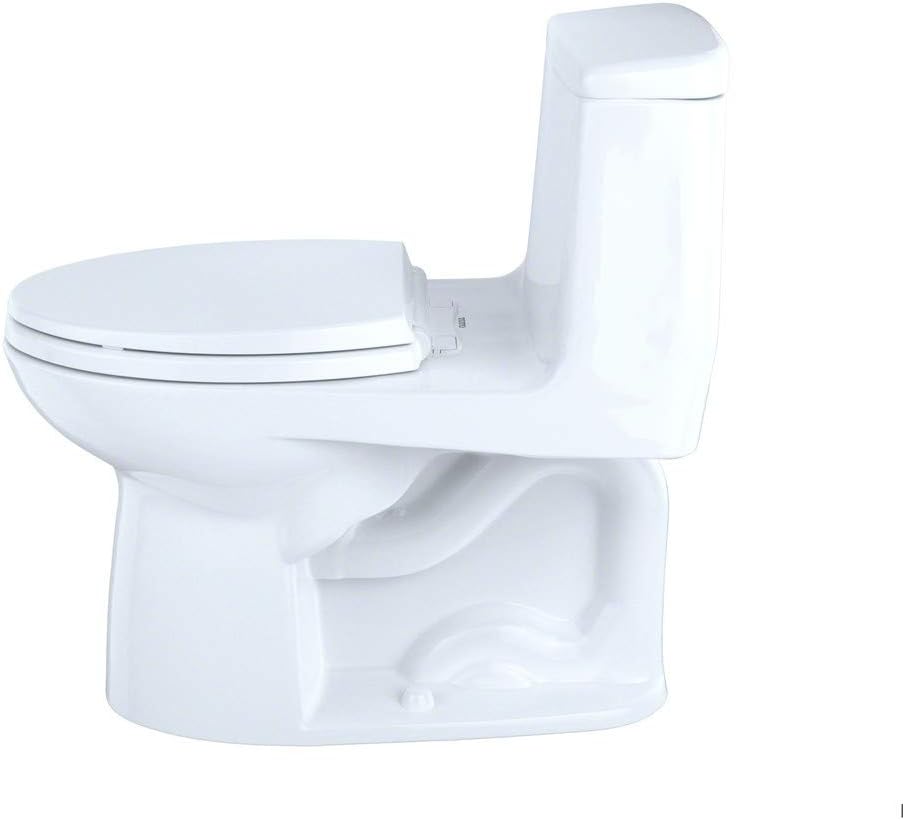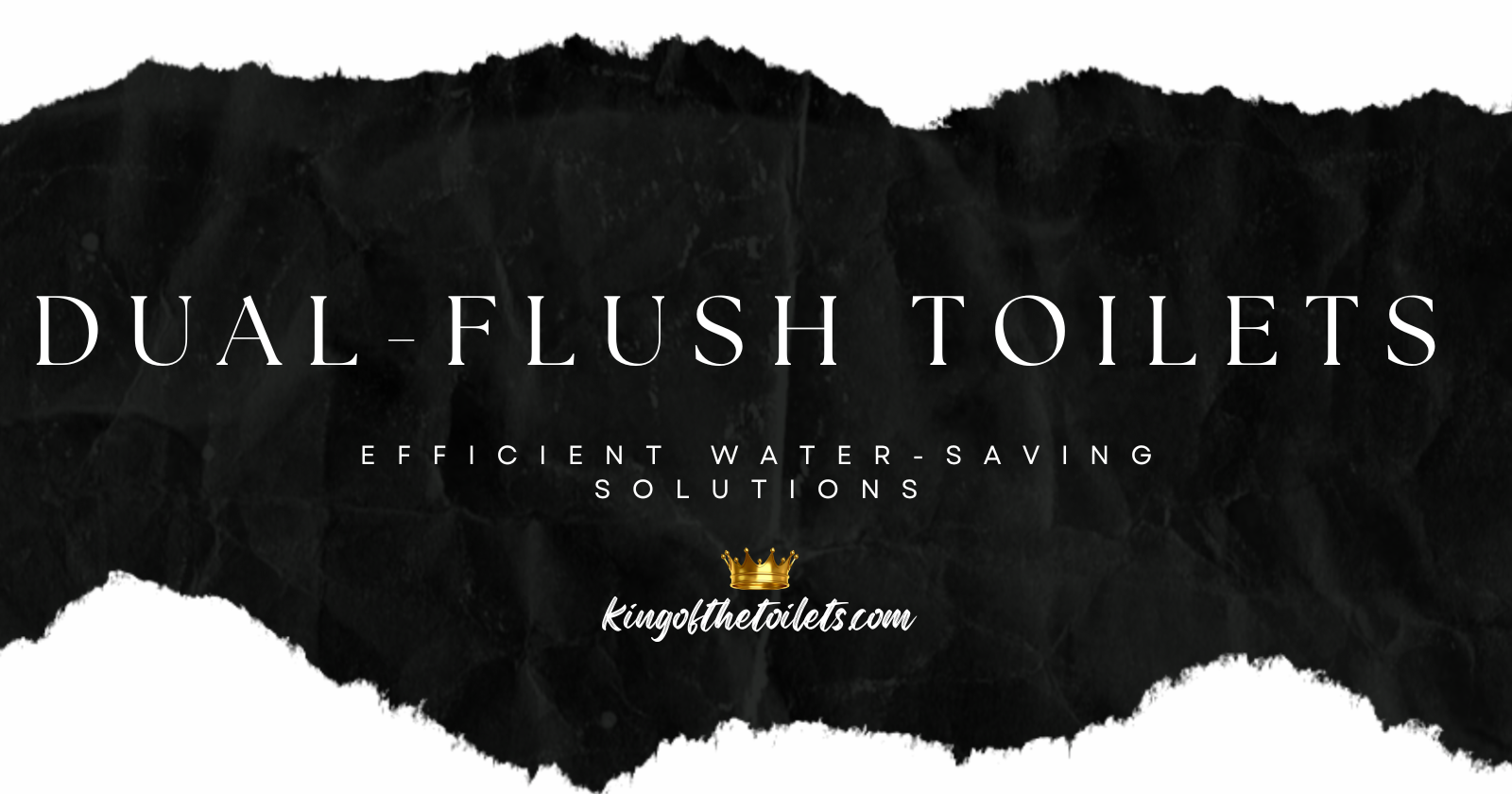
Dual-flush toilets are an innovative solution for those looking to enhance their bathroom’s efficiency and sustainability.
Featuring two flushing options, these toilets allow you to choose a lower water volume for liquid waste and a higher volume for solid waste, significantly reducing water usage.
This eco-friendly functionality not only helps conserve water but also lowers your utility bills.
In this guide, we’ll delve into the benefits of dual-flush toilets, explore their key features, and highlight some of the best models available.
Upgrade to a dual-flush toilet and make a positive impact on both your home and the environment.
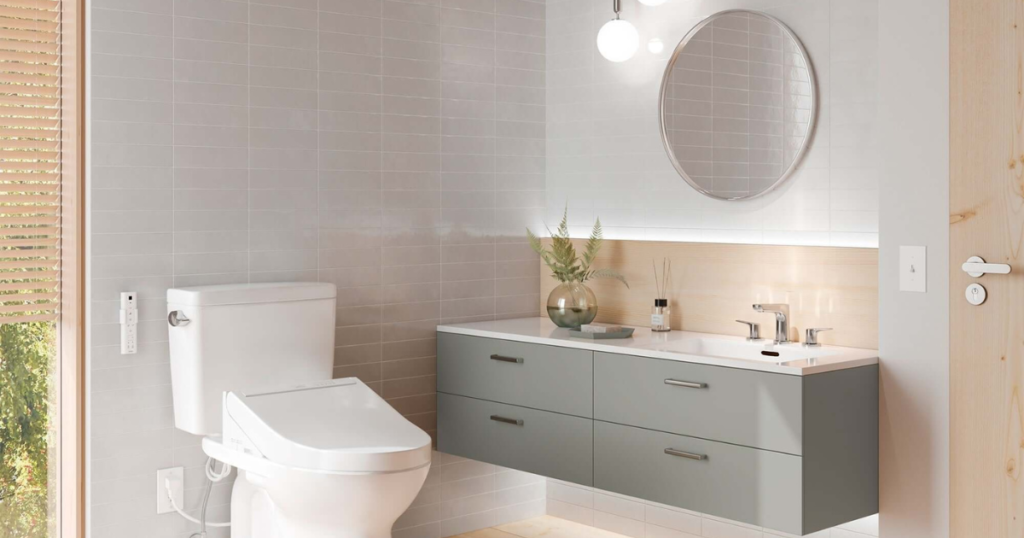
Overview of Dual-Flush Toilets
A dual-flush toilet offers two flushing options: a low-volume flush and a full-volume flush. This gives you control over how much water is used, making it a more efficient choice.
Styles of Dual-Flush Toilets
Dual-flush toilets come in various styles, such as:
- One-piece toilets: Compact and easy to clean.
- Two-piece toilets: Separate tank and bowl, typically less expensive.
- Wall-mounted toilets: Saves floor space and offers a modern look.
- Round toilets: Smaller, fit in tight spaces.
- Elongated toilets: Generally more comfortable with a larger bowl.
Flushing Mechanism
The flushing mechanism of a dual-flush toilet includes two buttons, usually on the top of the tank, that allow you to choose between a partial or full flush. This system uses gravity and a large trapway to clear waste more efficiently.
Advantages of Dual-Flush Toilets
- Water Savings: A low-volume flush uses less water, which can help reduce your water bill.
- Eco-Friendly: Less water usage helps conserve resources.
- Versatile: Suitable for both residential and commercial use.
Disadvantages of Dual-Flush Toilets
- Initial Cost: Often more expensive upfront compared to single-flush toilets.
- Complexity: The flushing mechanism can be more complicated to repair.
You can learn more about why people choose dual-flush toilets and their various styles.
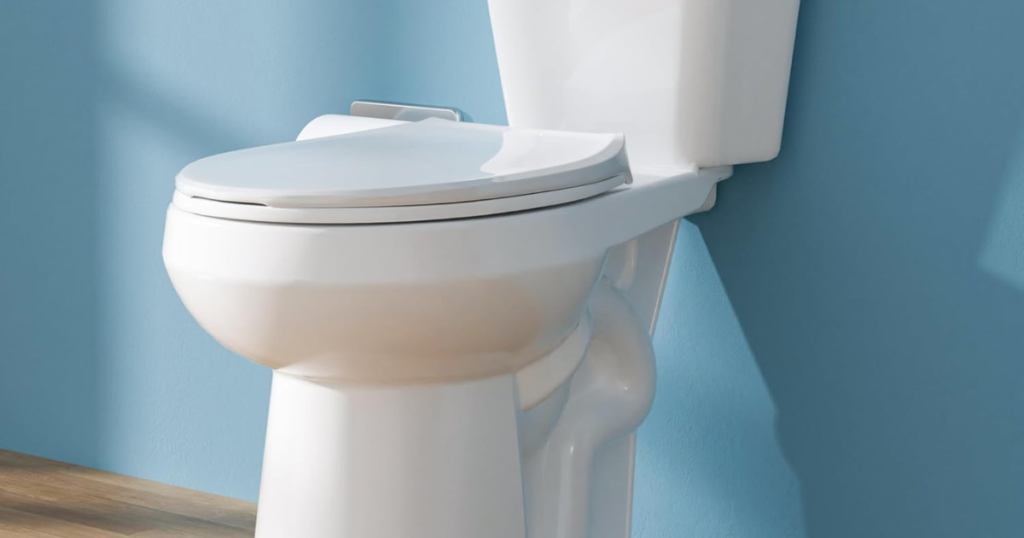
Efficiency and Water Conservation
Dual-flush toilets offer significant benefits in terms of water savings and efficiency. By using tailored flushing options, these toilets help reduce water consumption, lower your water bill, and contribute to water conservation efforts.
Understanding Water Usage
Dual-flush toilets are designed to optimize water usage. Conventional toilets use a single flush, typically 1.6 gallons per flush (gpf). In contrast, dual-flush toilets allow you to choose between a low-volume flush for liquid waste and a higher-volume flush for solid waste.
WaterSense-labeled toilets, certified by the Environmental Protection Agency (EPA), use about 1.28 gpf or less, which is 20 percent less water than the current standard. Using these toilets can significantly reduce water consumption and help combat water shortages.
Full vs. Half Flush Options
Dual-flush toilets have two options: the half flush and the full flush. The half flush uses as little as 0.8 gallons for liquid waste, while the full flush uses more, generally between 1.1 and 1.6 gallons for solid waste.
These options allow you to use only the amount of water necessary. This tailored approach makes dual-flush toilets extremely efficient. Many municipalities offer rebates for installing high-efficiency and ultra-high-efficiency toilets, further incentivizing water conservation efforts.
By choosing the appropriate flush option each time, you are not only saving water but also reducing your water bill. This system is effective in addressing issues related to water scarcity and promoting sustainable practices in your household.
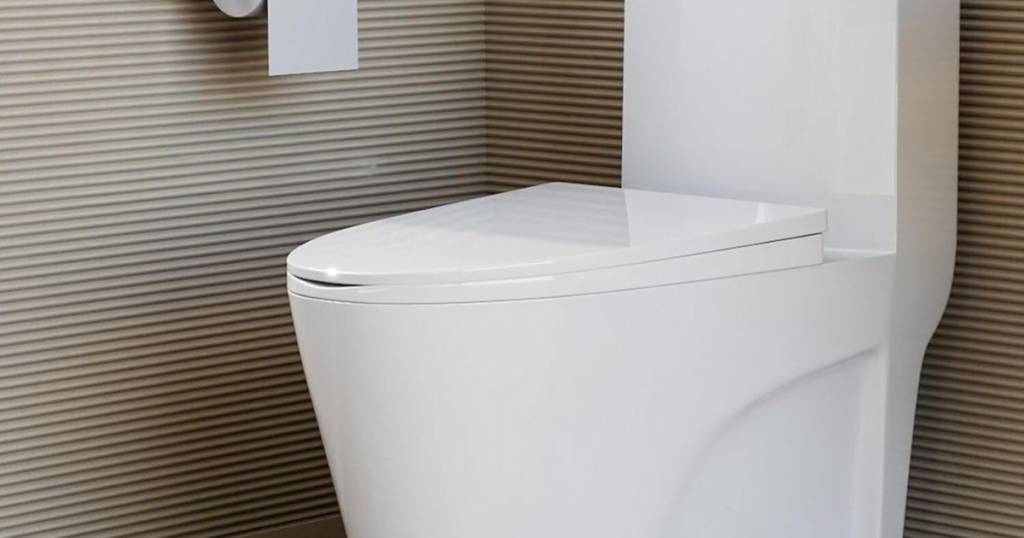
Installation and Upgrade Considerations
Upgrading to a dual-flush toilet involves selecting the right model and possibly hiring a professional for installation. Careful consideration of size, prices, and available rebates can make the process smoother.
Selecting the Right Model
When choosing the best dual-flush toilet, start by measuring the available space to ensure a proper fit. Sizes vary, so you want to pick one that fits your bathroom without problems. Look for water-saving models that offer significant water reductions.
Prices can vary widely. Affordable options might meet basic needs, but higher-end models can offer enhanced features like softer-closing seats. Check if there are any rebates or incentives available in your area that can help offset the initial cost. Many local utilities provide these promotions to encourage water conservation.
Finally, online reviews and customer feedback can highlight what others found useful or problematic. Before making a decision, consider durability and ease of use as essential factors.
Professional Installation and Setup
While some may attempt a DIY installation, a professional ensures proper setup and avoids common issues like leaks. Hiring a professional can also be a time-saver, as they have the right tools and experience.
Installation services can range in pricing, so contacting multiple providers can help you find the best deal. Ensure the professional provides clear instructions on maintenance and any specific care the toilet needs.
Look for promotions or bundled services that include installation to save money. Some vendors offer special deals if you purchase the toilet and installation together. This approach can simplify the upgrade process and provide you with peace of mind, knowing the job is done correctly.
Cost Analysis
Installing a dual-flush toilet can lead to significant savings on your water bill over time. Although they may be more expensive upfront, there are also potential incentives and rebates to consider.
Expense vs. Savings
Installing a dual-flush toilet initially costs more than a standard toilet. The price range varies based on quality and features, typically around $200 to $500. Despite the higher initial expense, the long-term benefits often outweigh the costs. Dual-flush toilets save a considerable amount of water.
For example, traditional toilets use about 6 liters per flush, while dual-flush models use 3 liters for full flushes and 1.5 liters for half flushes. This can result in a household saving up to 60 liters of water per day. Reduced water use translates to lower water bills, which can add up to substantial savings over time.
Incentives and Rebates
Many local governments and utility companies offer incentives and rebates for installing water-saving fixtures like dual-flush toilets. These incentives can offset the initial expense, making the investment more attractive. You should check with your local water authority or utility company for specific programs they might have in place.
Retailers and local stores sometimes offer promotions or discounts on dual-flush toilets. Online pricing might also be more competitive, so it’s worth comparing prices. By taking advantage of these incentives, you can help conserve water and reduce your overall costs.
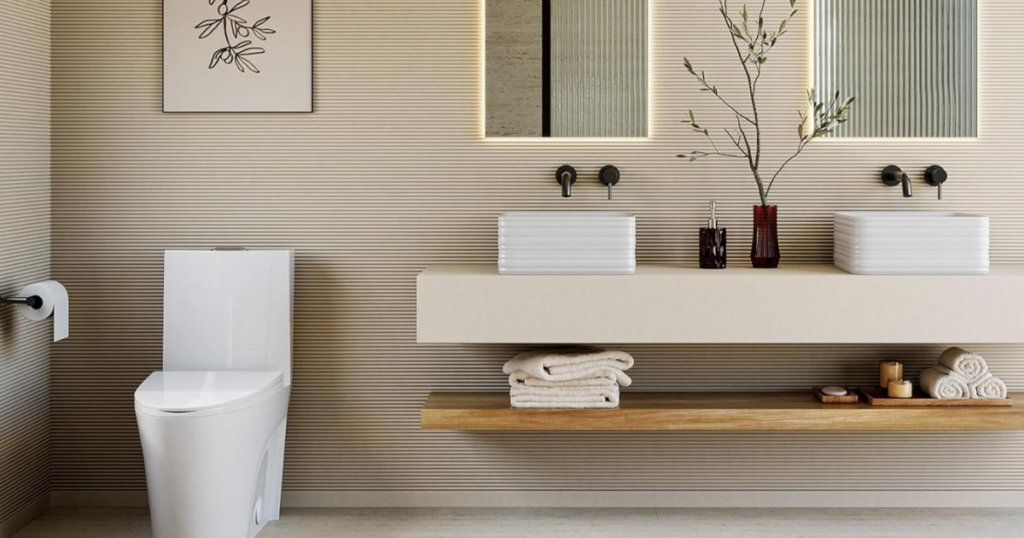
Wrapping Up
Dual-flush toilets offer a practical and eco-friendly solution for modern bathrooms. By providing two flushing options, they help conserve water and reduce utility bills without compromising performance.
Whether you’re renovating your bathroom or simply looking to make a sustainable choice, dual-flush toilets are a wise investment. With their sleek designs and innovative features, these toilets not only enhance the functionality of your bathroom but also contribute to a greener planet.
Upgrade to a dual-flush toilet today and experience the perfect blend of efficiency and environmental responsibility.
Frequently Asked Questions
What should be considered when choosing the best dual-flush toilet?
Several factors should be considered when choosing a dual-flush toilet. Water efficiency varies, with the larger flush using 6-9 liters and the smaller flush using 3-4.5 liters, so select a model that meets your waste disposal needs.
While dual-flush toilets can be more expensive initially and may require more frequent cleaning, they are a wise investment if you are comfortable with the upkeep and potential costs.
Ensure the toilet is user-friendly, with accessible buttons and a comfortable height, noting that button placement can vary by model. These toilets use a larger trapway for more efficient waste removal and fewer clogs compared to traditional siphoning mechanisms.
Additionally, check compatibility with your plumbing system, as some models might need extra parts or adjustments. Lastly, dual-flush toilets offer significant environmental benefits by saving water, especially when using the smaller flush for liquid waste.

